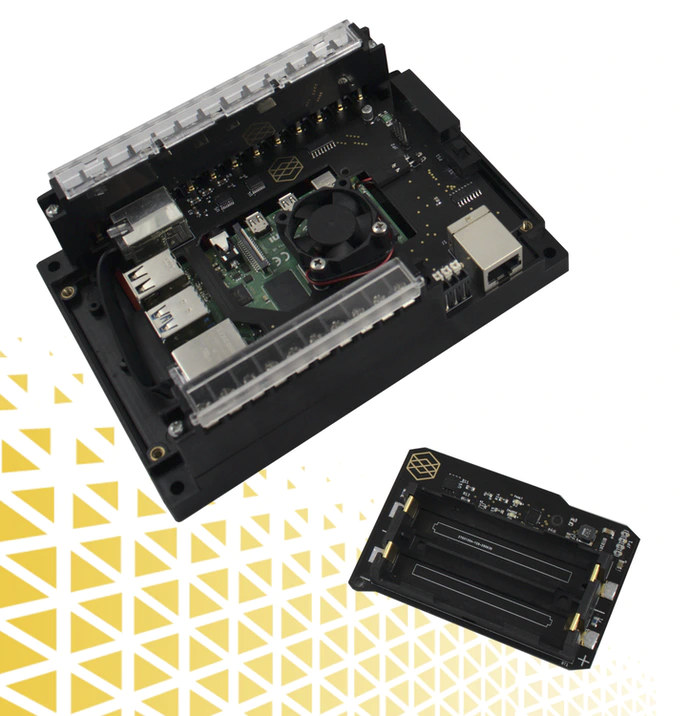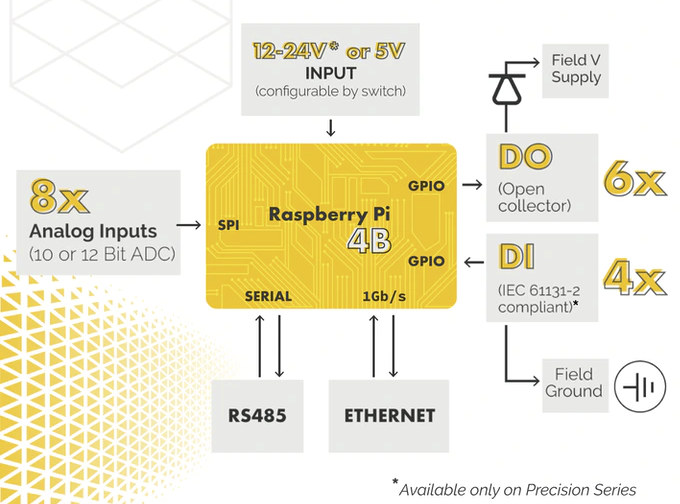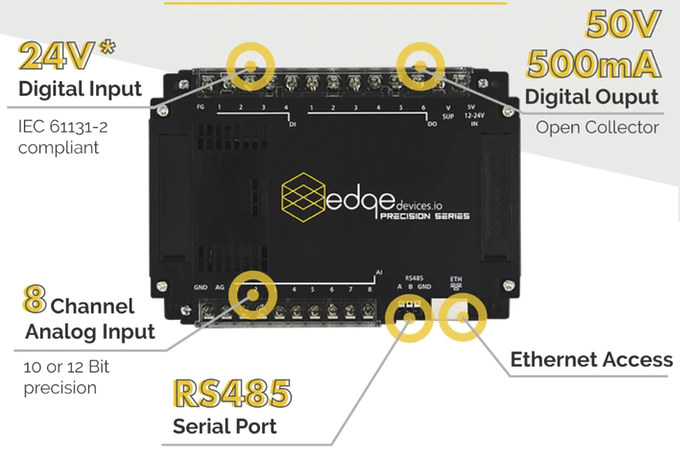Pi-oT was launched last year as a Raspberry Pi add-ons designed for commercial and industrial IoT automation. It features 5V I/Os, relays, and ADC inputs suitable for light-duty projects and prototyping.
The company, called Edge Devices, has now launched an update with Pi-oT 2 adding optional support for 24V digital inputs, RS-485, and an uninterruptible power supply (UPS).

Pi-oT 2 comes in three variants with the following key features and specifications:
- SBC support – Raspberry Pi model B boards with 40-pin I/O header
- Connectivity – Ethernet access via extra port
- 6x digital outputs
- 8x analog inputs (0 to 5V), 10-bit precision for Pi-oT 2 and 2 +Plus models, 10-bit precision for Pi-oT 2 Precision variant
- Model specific features
- Pi-OT 2
- 4x GPIO
- 5V power supply
- Pi-oT 2 +Plus
- 4x GPIO
- 5V power supply + UPS
- Pi-OT 2 Precision
- 4x 24V digital inputs, compliant with IEC-61131-2 standard (instead of 4x GPIO on the standard models)
- RS-248 interface
- 5V, 12V, or 24V power supply (controlled by on-board switch) + UPS
- Pi-OT 2
- Misc – 5V fan and on-board fan mounts
- Enclosure – DIN rail or screw mounting enclosure
All I/Os are connected through screw terminals, and the removable UPS integrates up to two LiFePO4 batteries for back-up power and to enable safe shut down in case of power loss.
When asked specifically about the differences between the original Pi-oT and the new model, Nate Albright, Founder of EdgeDevices, explains:
The original Pi-oT was great for light-duty projects and prototyping. This new Pi-oT 2 has features that allow it to interface directly with industrial level protocols like RS485 or 24 volt inputs. The open collector digital outputs also allow the device to control much larger relays than the original Pi-oT. This enables the device to control other devices like pneumatics and valves, or the open collectors can be used to send signals to other PLCs.
All of this combined with the uninterruptible power supply (UPS) makes the new Pi-oT 2 a much more versatile and capable device than the original, while still coming in at a lower price point than other product in the category.
Apart from a simple script to initiate a soft shutdown in case of power failure, there’s no specific software for the module, since it will rely on Raspberry Pi OS or other operating systems compatible with Raspberry Pi boards, as well as software specific to each project.
Just like for their first IoT module, Edge Devices launched their industrial solution on Kickstarter with a $5,000 funding target. Rewards start at $95, but if you’d like to benefit from the UPS, you’ll need to pledge $115 for the 2+ Plus model, but most people so far have pledged over $159 to get the Precision-series model with 12V/24V power inputs, 24V digital inputs, and RS-485 serial interface. Shipping is scheduled for January 2021 and adds $20 to the overall cost.

Jean-Luc started CNX Software in 2010 as a part-time endeavor, before quitting his job as a software engineering manager, and starting to write daily news, and reviews full time later in 2011.
Support CNX Software! Donate via cryptocurrencies, become a Patron on Patreon, or purchase goods on Amazon or Aliexpress






